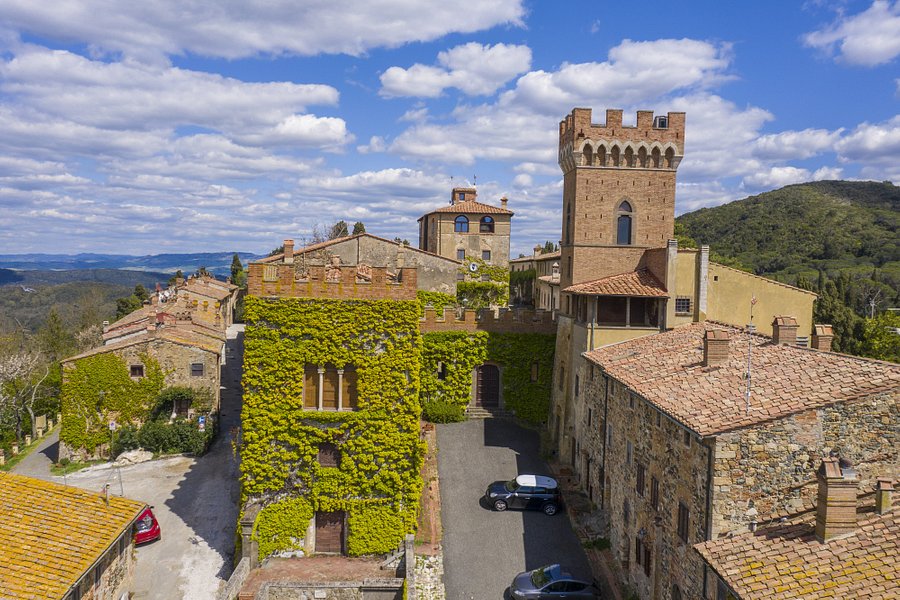


Castello Ginori di Querceto is an ancient fortified village in the Volterra area on the slopes of Mount Aneo, at the center of the extensive farm of the same name.
The origins of the village date back to the year 1000 when it belonged to the church of Massa Marittima. In the late 1100s the bishop of Massa ceded his rights to the village to the abbot of San Pietro in Palazzuolo di Monteverdi. Later, in 1208, Querceto along with other castles in the Val di Cecina (Canneto, Micciano, Libbiano, La Sassa, Serrazzano and Monterufoli) was ceded to the municipality of Volterra.
At that time Querceto was of considerable importance both for its military power and for the many natural resources in its subsoil: first of all the "moie," springs of salt water, then various minerals such as silver, copper and mercury, but also vitriol and alum, which constituted a much sought-after commodity in the international markets of the Middle Ages.
After two centuries marked by armed clashes and revolts in the Volterra area, in 1430 the castle was occupied and sacked by the troops of Giangaleazzo Visconti, Duke of Milan.
Later, in 1447, Querceto was conquered by the troops of Alfonso of Aragon, king of Naples, who had gone to war against Florence.
The 16th century was marked by Florentine domination; in fact, following the conquest of Volterra by the Florentines, the inhabitants of Querceto swore allegiance to the Signoria of Florence. During this period, more precisely in 1543, the noble Lisci family of Volterra settled in Querceto.
In 1786 the last descendant of the Lisci, Francesca, married Marquis Lorenzo Ginori. With the advent of the Ginori family ended a black period for Querceto, characterized by famine, misery and the misrule of the decadent Medici dynasty.

In 1814 Carlo Leopoldo inherited the Querceto farm from his mother Francesca; since then the land and castle have remained in the Ginori family. He put into practice numerous innovations in farming systems, increasing the yield of the land, and made special efforts to encourage cattle breeding and the improvement of breeds. In 1834 at Tegolaia-now Ponteginori-he had the bridge built over the Cecina River, which connected the Querceto estate with the Val di Cecina road.

In the twentieth century, it was Lorenzo and his son Leonardo who gave further impetus to agricultural development, helping to make the Querceto farm a renowned model farm.

In recent years, the hamlet has been gradually restored, trying to maintain the original structure as much as possible.

A number of apartments with a simple but distinctive style were also created in the renovation, which are rented out for vacation.
Castello Ginori
Address: Via del Borgo, Località Querceto, 56040
Phone: 058837472
Site:
https://www.castelloginoridiquerceto.it/Location inserted by
Giulia